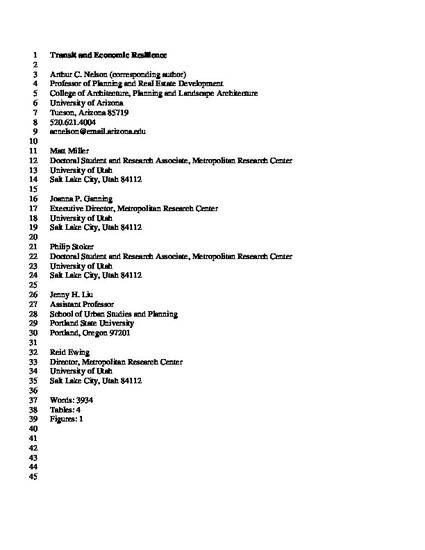
- Transit-oriented development,
- Transportation -- Planning,
- Street-railroads -- Economic aspects
Do fixed-guideway transit systems facilitate resilience with metropolitan areas? There is little literature making this connection theoretically and none testing it empirically. This paper helps close this gap in both respects. In evaluating metropolitan areas with light rail transit systems the authors find evidence that transit corridors on the whole performed better than control corridors during the recovery period of two recessions: that of the early 2000s and the so-called Great Recession. In particular, during the Great Recession transit corridors outperformed control corridors among many economic sectors. Outcomes were more impressive during recoveries from both the recession of the early 2000s and the Great Recession. The authors offer implications for the role of these forms of fixed-guideway transit on economic resiliency.
Available at: http://works.bepress.com/joanna-ganning/4/

This is the author's version of the article. Submitted for presentation and publication to the 94th Annual Meeting of the Transportation Research Board January 11-15, 2015.
The final research report that this work is derived from is located here: http://archives.pdx.edu/ds/psu/16717